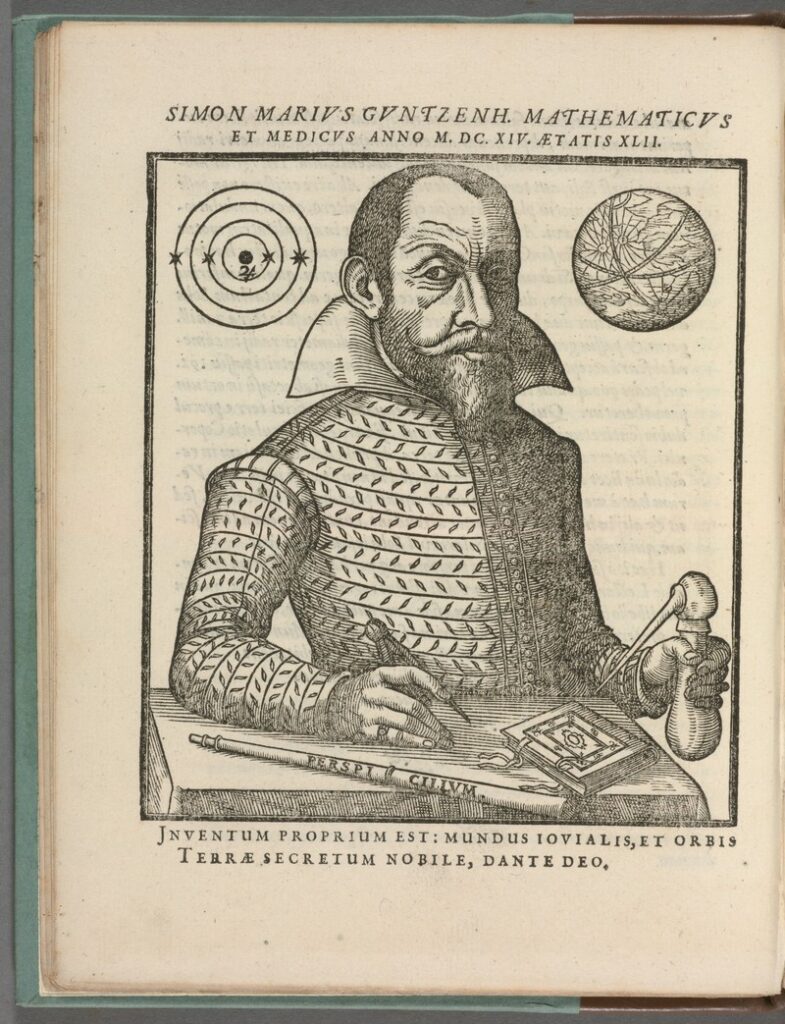Usually, Galileo di Vincenzo Bonaiuti de’ Galilei [1564 to 1642] gets the credit for discovering the largest four moons of Jupiter – a most controversial scientific sensation at the time.
But not so fast! As usual, the truth is a little more nuanced.
Today happens to be the birthday of the German astronomer Simon Mayr [1573 to 1624 or 1625], better known under his Latin name, Simon Marius. In Mundus lovialis, his book from 1614, Marius describes Jupiter and claims that he discovered four moons in 1611. According to his claims, he would have made his discovery about a month earlier than Galileo Galilei.
Of course, Galileo was a famous celebrity and well known among Europe’s intellectuals and clergy. He appears to have been unimpressed by Marius and swiftly accused him of plagiarism, causing Marius’ reputation to suffer greatly.
It took 289 years to exonerate Marius. In 1903, a scientific jury in the Netherlands examined the evidence extensively. Its findings, published in 1907 were: Marius discovered the moons independently, but he did not start keeping notes until 29 December, 29, 1609 on the Julian calendar. This date corresponds to January 8, 1610 on the Gregorian calendar used by Galileo and falls on the day after the famous letter in which Galileo first described the moons. Moreover, Marius’ description of the moons’ orbits is superior to Gelileo’s.
So who was really first? We’ll never know for sure, simply because there is no record of the date on which Marius made his initial observation. We only know when he recorded it, and when Galileo recorded his own observation.
It may seem ironic that the names under which the “Galilean” moons are known today are those given to them by Marius: Io, Europa, Ganymede and Callisto. (Galileo had named them after one of Europes most powerful and wealthiest families at the time, “the Medici Stars”).
So what can we learn from this story?
- Keep good notes.
- Know what calendar to use.
- It helps to be famous.

